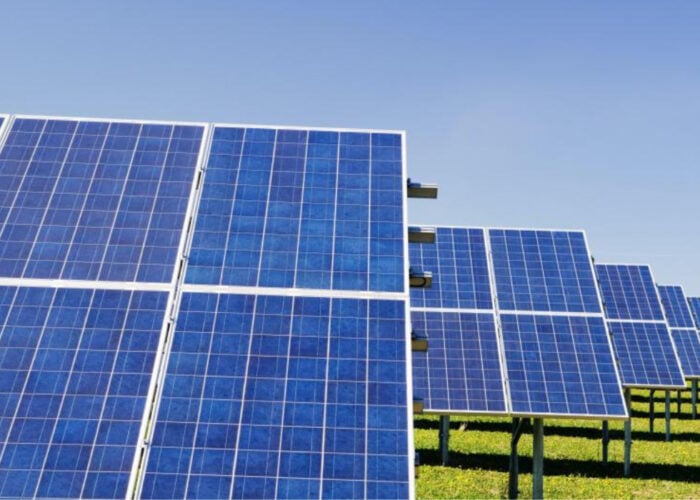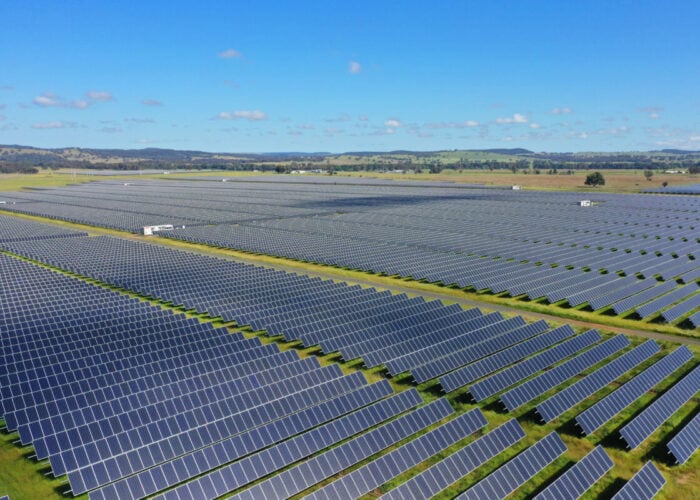
The Australian Electricity Market Operator (AEMO) has indicated that Australia has seen the addition of 1.2GW of new large-scale solar projects brought online and connected to the National Electricity Market (NEM) in the past 12 months.
Detailed within its 2024 Electricity Statement of Opportunities (ESOO) report, which provides a 10-year outlook of investment requirements to maintain reliability for the NEM, large-scale solar saw substantial growth, yet was trumped by the 3.9GW/13.5GWh of battery energy storage systems (BESS) that were brought online.
Unlock unlimited access for 12 whole months of distinctive global analysis
Photovoltaics International is now included.
- Regular insight and analysis of the industry’s biggest developments
- In-depth interviews with the industry’s leading figures
- Unlimited digital access to the PV Tech Power journal catalogue
- Unlimited digital access to the Photovoltaics International journal catalogue
- Access to more than 1,000 technical papers
- Discounts on Solar Media’s portfolio of events, in-person and virtual
Or continue reading this article for free
Solar came up on top of the primary renewable energy generation technologies connected to the NEM, with consumers also investing heavily in larger rooftop solar PV systems. Second to solar PV was wind generation, with 0.2GW brought online, alongside 0.2GW of green hydrogen generation.
The AEMO stated that delivering these new renewable energy generation capabilities, alongside the necessary energy storage to capture them, is critical to maintaining reliability for electricity consumers. Transmission upgrades have further enhanced this, granting further NEM capacity for connecting new projects.
Solar PV could also be boosted by various other technologies being introduced. For instance, AEMO believes that BESS sites requiring daytime charging will increase the demand for solar. Likewise, with the uptake of electric vehicle (EV) drivers across the NEM, solar PV could provide a low-cost method of supplying renewable energy to the vehicles.
Consumer energy resources could bolster NEM stability
The AEMO’s outlook is optimistic about the potential impact of federal and state government programmes to deliver renewable energy generation, dispatchable resources, transmission developments, and coordination of forecast consumer energy resources (CER).
If implemented on time and in full, these initiatives are expected to increase generation capacity enough to meet the growing electricity demand while maintaining reliability standards over the next decade. However, AEMO warns that they must be delivered on time.
CERs, in particular, have become increasingly under the spotlight in how they could aid the Australian renewable energy system and grant further stability and security of supply during peaks of high demand. Earlier this month (16 August), PV Tech previously reported that the Australian Energy Market Commission (AEMC) is set to integrate new rules surrounding CERs, allowing consumers to exercise greater control over their energy use.
This followed plans revealed by the AEMC in July 2024 proposing to enable virtual power plants (VPPs) to compete directly with large-scale generators in the energy market. This would be achieved by enabling aggregated CERs to be scheduled and dispatchable in the NEM.
Reliability risks to re-emerge following Eraring closure
The outlook for the end of the decade, particularly in 2027 and 2028, suggests that AEMO believes reliability will once again be a concern for the NEM, due to the expected closure of Origin Energy’s Eraring coal-fired power station.
In early 2022, Origin Energy, the power station’s owner, said it would be retiring the coal-fired power plant in 2025, yet in May 2024, the New South Wales government controversially extended this by an additional two years to “guarantee a maximum of electricity supply”. The new expected closure date is scheduled for August 2027.
At the time, AEMO stated that, without Eraring, New South Wales would face energy reliability risks from 2025, instead of the predicted 2027-2028 forecast now. As such, the state government is subsidising the power station to ensure it can remain operational.
Although the decision remains controversial, global market research organisation Cornwall Insight revealed that extending Eraring’s service will cut New South Wales’ power prices by 44%, dropping from a predicted AU$153/MWh to AU$86/MWh in 2026. However, question marks remain over the power station’s use and impact on New South Wales and Australia’s climate goals.
It is worth noting that Origin Energy is in the process of developing two BESS at Eraring. Stage 1 of the project saw a 460MW/1073MWh 2-hour duration BESS being constructed, with a new additional 240MW/1030MWh grid-forming BESS having been approved late last month (25 July).
AEMO anticipates that the reliability risks in 2027 and 2028 will be partially mitigated by the HumeLink transmission project and several solar and battery initiatives, such as the 1.6GWh Orana BESS and the 2.2GWh Richmond Valley BESS.
This is followed by numerous committed and anticipated wind, solar, hydro and battery developments in 2028-29, including the 2GWh Liddell BESS and partial commissioning of Snowy 2.0 pumped hydro.







